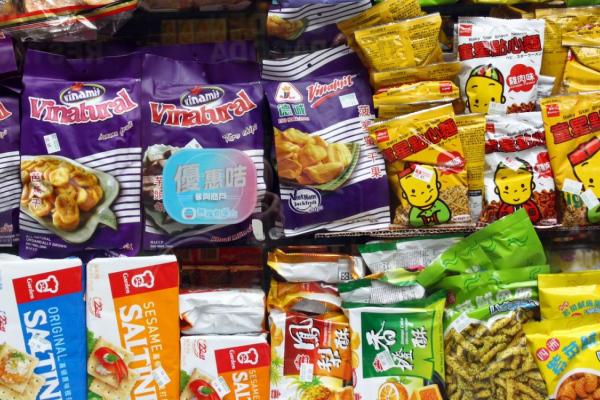Trans fats are the worst type of fat you can eat. Most trans fat is formed through an industrial process that adds hydrogen to vegetable oil, which causes the oil to become semi-solid at room temperature. It is also known as industrially-produced trans fatty acid (iTFA) or partially hydrogenated oil (PHO), which you may see on the ingredients list of the foods you buy.
The use of iTFA has increased since the 1950s, because it is cheap and has a long shelf life. iTFA use has further increased since the 1960s when the food industry began replacing animal fats with iTFA following public health recommendations to reduce the intake of saturated fats, such as those contained in butter. However, today healthier options are available and iTFA can be replaced without added cost or lost flavour.
Naturally occurring trans fats are also produced by bacteria in the gut of ruminants (cattle, goats, sheep), and dairy and meat products derived from them contain small amounts of trans fats.
How do trans fats affect our health?
Unlike other dietary fats, trans fats raise your "bad" cholesterol, causing it to build up in your arteries, and also lowers your "good" cholesterol, which helps remove excess cholesterol from your body.
Trans fats have no known health benefits and are a major contributor to CVD worldwide, estimated to cause around 540,000 deaths every year. High intake of trans fats increases the risk of death from any cause by 34% and from coronary heart disease by 28%. For every 1% increase in daily energy obtained from trans fats, coronary heart disease mortality raises by 12%. Trans fats intake has also been associated with an increased risk for other
noncommunicable diseases (NCDs) and related conditions such as ovarian cancer, infertility, endometriosis, Alzheimer’s disease,
diabetes and obesity.
Trans fats in our food and how to avoid them
Although there is no safe level of trans fat consumption, the World Health Organization recommends that total trans fats intake does not exceed 1% of total energy intake, which translates to less than 2.2g per day for a 2,000-calorie diet.
Be careful when looking for trans fats in your food that you are checking for the most commonly manufactured variety: partially hydrogenated vegetable oil, which can be found in a variety of food products. These most commonly include (but are not limited to):
-
Baked goods, such as cakes, cookies and pies
-
Shortening
-
Microwave popcorn
-
Frozen pizza
-
Refrigerated dough, such as biscuits and rolls
-
Fried foods, including french fries, doughnuts and fried chicken
-
Nondairy coffee creamer
-
Stick margarine
-
Fast food.
When choosing fats and oils for your own cooking, try to choose healthier options like olive, soybean or canola oil.
Policies to reduce industrially-produced trans fats
It is estimated that iTFA elimination in all countries around the world could save 17 million lives by 2040. That is why, to facilitate the removal of iTFA from the global food supply by 2023, WHO launched the REPLACE initiative in 2018. REPLACE is the first global initiative that aims to eliminate an
NCD risk factor.
In September 2020, WHO announced a certification scheme to recognise countries that achieve the elimination of iTFA, similar to their certification schemes for polio and smallpox eradication.
iTFA elimination is also a priority target of WHO’s Strategic Plan 2019-2023 and is deemed by WHO to be a cost-effective and feasible intervention (a so-called ‘best buy’), recommended for implementation in all countries to prevent noncommunicable diseases.
The WHO’s two best-practice policies for TFA elimination are:
-
A mandatory national limit of 2 g of industrially produced TFA per 100 g of total fat in all foods; and
-
A mandatory national ban on the production or use of partially hydrogenated oil as an ingredient in all foods.
As of January 2022, mandatory iTFA policies are currently in effect for 4.6 billion people in 58 countries; of these, 41 countries have best-practice policies in effect, covering 2.8 billion people (nearly 40% of the global population).
Such interventions are one of the reasons high-income countries have managed to reduce CVD deaths by more than 25% since 2000. Conversely, low- and middle-income countries (LMICs) bear up to 90% of the global CVD burden, underscoring the need for iTFA elimination strategies globally.
In addition, iTFA elimination policies reduce health inequalities, as communities of lower socio-economic status tend to consume higher amounts of iTFA. Disparities in protection from iTFA also persist. Most laws and regulations have been adopted in high-income or upper-middle-income countries in Europe and the Americas.As of 2021, no low- or lower- middle-income country had implemented a best practice policy to date, resulting in geographic and socio-economic inequalities.
However, India marked a change by implementing a best practice policy in January 2022 and protecting an additional 1.4 billion people. The prevention of death and disease attributable to iTFA consumption lessens the burden on health systems as well. Using these population-wide primary prevention strategies in the COVID-19 response will serve as a stepping stone to tackle the world’s biggest killer, CVD, and many other chronic conditions; support economic recovery from the pandemic; and increase health security by making future generations more resilient to infectious diseases.
Calls to action to accelerate progress on trans fats
Governments
-
Adopt, implement and enforce mandatory best practice regulation: iTFA limit of 2g per 100g fat/oil in all foods or a ban of partially hydrogenated oils (PHO).
-
Work with food manufacturers to ensure iTFA is replaced with healthier fats – ideally polyunsaturated (healthiest) or monounsaturated fats and oils.
-
Embed iTFA elimination into a broader policy approach addressing CVD and other NCDs by adopting complementary nutrition and health policy measures.
Civil society
-
Raise awareness of the negative effects of iTFA consumption and advocate for iTFA elimination.
-
Call out, challenge and counter food industry opposition to iTFA regulation and other cost-effective nutrition policy measures.
-
Support governments in the development and adoption of iTFA regulation, and once enacted, hold governments to account for effective implementation, monitoring and enforcement.
Trans fats best practice highlights
Countries that have already eliminated iTFA from their food supply have seen substantial health benefits. Although the economic value of investing in the removal of iTFA from the global food supply has not been calculated at a global level, several local estimates show that the intervention is cost-effective.
Argentina
iTFA elimination would save between US$17 million and US$87 million per year in costs associated with the management of coronary heart disease complications and follow-up. These cost savings include implementation costs of the policy incurred by the Ministry of Health, but do not consider other economic costs, such as lost productivity due to heart disease.
European Union
Prior to adopting a mandatory 2% iTFA limit, the European Union estimated that phasing out iTFA would result in direct and indirect cost savings of €58-304 billion (US$68-358 billion) over 85 years.
United Kingdom
One study found that iTFA regulation in England and Wales over a ten-year period would bring cost savings of between £755 million to £1.54 billion (US$965 million to US$1.97 billion), comprising £95-201 million (US$121-257 million) in direct healthcare costs, £368-727 million (US$470-929 million) in informal care costs, and £292-613 million (US$373- 783 million) in averted productivity loss.
Sources:
Page last updated: 09/02/2022

